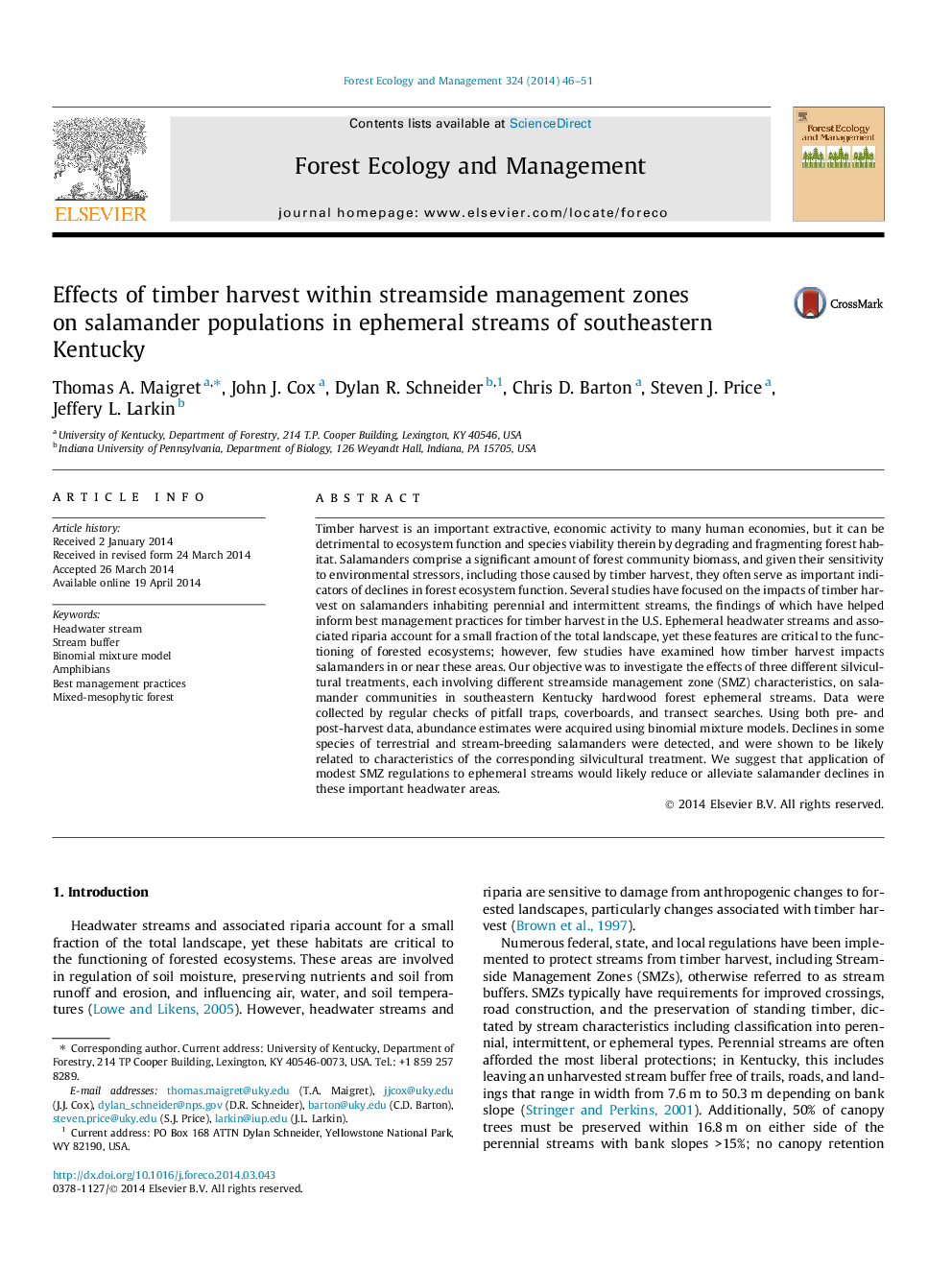| Article ID | Journal | Published Year | Pages | File Type |
|---|---|---|---|---|
| 86623 | Forest Ecology and Management | 2014 | 6 Pages |
•We sampled five ephemeral watersheds for salamanders before and after logging.•We used a binomial mixture model to estimate salamander abundances.•Some salamander abundances were lower at sites that received current Kentucky BMPs.•An augmented version of the current Kentucky BMPs prevented these declines.
Timber harvest is an important extractive, economic activity to many human economies, but it can be detrimental to ecosystem function and species viability therein by degrading and fragmenting forest habitat. Salamanders comprise a significant amount of forest community biomass, and given their sensitivity to environmental stressors, including those caused by timber harvest, they often serve as important indicators of declines in forest ecosystem function. Several studies have focused on the impacts of timber harvest on salamanders inhabiting perennial and intermittent streams, the findings of which have helped inform best management practices for timber harvest in the U.S. Ephemeral headwater streams and associated riparia account for a small fraction of the total landscape, yet these features are critical to the functioning of forested ecosystems; however, few studies have examined how timber harvest impacts salamanders in or near these areas. Our objective was to investigate the effects of three different silvicultural treatments, each involving different streamside management zone (SMZ) characteristics, on salamander communities in southeastern Kentucky hardwood forest ephemeral streams. Data were collected by regular checks of pitfall traps, coverboards, and transect searches. Using both pre- and post-harvest data, abundance estimates were acquired using binomial mixture models. Declines in some species of terrestrial and stream-breeding salamanders were detected, and were shown to be likely related to characteristics of the corresponding silvicultural treatment. We suggest that application of modest SMZ regulations to ephemeral streams would likely reduce or alleviate salamander declines in these important headwater areas.
